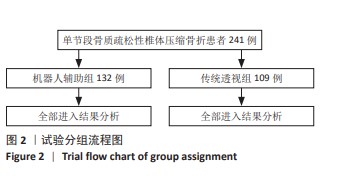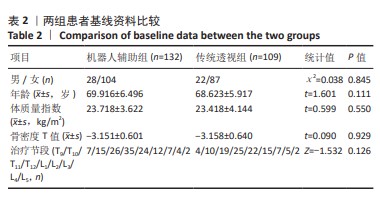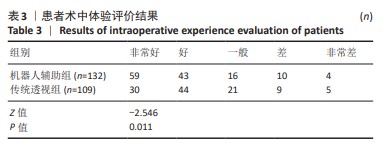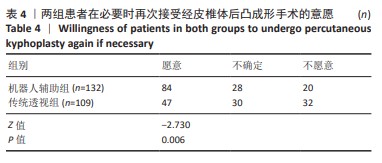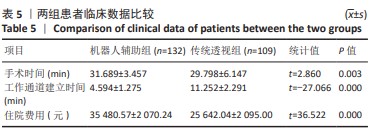1] YANG H, LIU H, WANG S, et al. Review of Percutaneous Kyphoplasty in China. Spine (Phila Pa 1976). 2016;41 Suppl 19:B52-B58.
[2] PATEL N, JACOBS D, JOHN J, et al. Balloon Kyphoplasty vs Vertebroplasty: A Systematic Review of Height Restoration in Osteoporotic Vertebral Compression Fractures. J Pain Res. 2022;15:1233-1245.
[3] 陆兆华,孙天泽,张警,等.不同入路椎体后凸成形术治疗骨质疏松性椎体压缩骨折[J].中国组织工程研究,2023,27(36):5834-5839.
[4] GRIFFONI C, LUKASSEN JNM, BABBI L, et al. Percutaneous vertebroplasty and balloon kyphoplasty in the treatment of osteoporotic vertebral fractures: a prospective randomized comparison. Eur Spine J. 2020;29(7):1614-1620.
[5] FILIPPIADIS DK, MARCIA S, MASALA S, et al. Percutaneous Vertebroplasty and Kyphoplasty: Current Status, New Developments and Old Controversies. Cardiovasc Intervent Radiol. 2017;40(12): 1815-1823.
[6] HUANG Y, LIU Y, ZHONG F, et al. Percutaneous Curved Vertebroplasty Versus Unilateral Percutaneous Vertebroplasty for Osteoporotic Vertebral Compression Fractures: A Systematic Review and Meta-Analysis. World Neurosurg. 2024;181:29-37.
[7] LV Z, CHEN Z, CHEN H, et al. Percutaneous Curved Vertebroplasty Versus Unipedicular Approach Vertebroplasty for Acute Osteoporotic Vertebral Compression Fractures : A Randomized Controlled Trial. Spine (Phila Pa 1976). 202;48(8):552-558.
[8] 金耀,卢慧,陈洁,等.不同麻醉方式在高龄经皮椎体后凸成形术中的临床疗效观察[J].实用骨科杂志,2024,30(2):153-156+186.
[9] NOGUCHI T, YAMASHITA K, KAMEI R, et al. Current status and challenges of percutaneous vertebroplasty (PVP). Jpn J Radiol. 2023; 41(1):1-13.
[10] CAVKA M, DELIMAR D, REZAN R, et al. Complications of Percutaneous Vertebroplasty: A Pictorial Review. Medicina (Kaunas). 2023;59(9):1536.
[11] HUANG M, TETREAULT TA, VAISHNAV A, et al. The current state of navigation in robotic spine surgery. Ann Transl Med. 2021;9(1):86.
[12] 李佳鸿,林书,唐六一,等.骨科机器人辅助下经皮固定小切口减压术治疗晚期胸腰椎转移瘤[J].中国修复重建外科杂志,2023, 37(9):1113-1118.
[13] GARG B, MEHTA N, MALHOTRA R. Robotic spine surgery: Ushering in a new era. J Clin Orthop Trauma. 2020;11(5):753-760.
[14] DAVIDAR AD, JIANG K, WEBER-LEVINE C, et al. Advancements in Robotic-Assisted Spine Surgery. Neurosurg Clin N Am. 2024;35(2): 263-272.
[15] SIELATYCKI JA, MITCHELL K, LEUNG E, et al. State of the art review of new technologies in spine deformity surgery-robotics and navigation. Spine Deform. 2022;10(1):5-17.
[16] ABEL F, AVRUMOVA F, GOLDMAN SN, et al. Robotic-navigated assistance in spine surgery. Bone Joint J. 2023;105-B(5):543-550.
[17] ZHANG Q, HAN XG, FAN MX, et al. Robotic navigation during spine surgery: an update of literature. Expert Rev Med Devices. 2023;20(6): 427-432.
[18] LIU D, ZHANG H, FAN X. Robot-assisted percutaneous vertebroplasty for osteoporotic vertebral compression fracture treatment and risk factor screening for postoperative refracture. J Robot Surg. 2024;18(1):23.
[19] CHEN H, LI J, WANG X, et al. Effects of robot-assisted minimally invasive surgery on osteoporotic vertebral compression fracture: a systematic review, meta-analysis, and meta-regression of retrospective study. Arch Osteoporos. 2023;18(1):46.
[20] WANG B, CAO J, CHANG J, et al. Effectiveness of Tirobot-assisted vertebroplasty in treating thoracolumbar osteoporotic compression fracture. J Orthop Surg Res. 2021;16(1):65.
[21] 林书,胡豇,万仑,等.骨科机器人辅助经皮椎体后凸成形治疗多节段脊柱转移瘤[J].中国组织工程研究,2020,24(33):5249-5254.
[22] TAN L, WEN B, GUO Z, et al. Robot-assisted percutaneous vertebroplasty for osteoporotic vertebral compression fractures: a retrospective matched-cohort study. Int Orthop. 2023;47(2):595-604.
[23] LIN S, TANG LY, WANG F, et al. TiRobot-assisted percutaneous kyphoplasty in the management of multilevel (more than three levels) osteoporotic vertebral compression fracture. Int Orthop. 2023;47(2): 319-327.
[24] 林书,谭科,胡豇,等.改良骨科机器人辅助椎体后凸成形术治疗骨质疏松性椎体压缩骨折疗效分析[J].中国修复重建外科杂志, 2022,36(9):1119-1125.
[25] SHI B, HU L, DU H, et al. Robot-assisted percutaneous vertebroplasty under local anaesthesia for osteoporotic vertebral compression fractures: a retrospective, clinical, non-randomized, controlled study. Int J Med Robot. 2021;17(3):e2216.
[26] JIN M, GE M, LEI L, et al. Clinical and Radiologic Outcomes of Robot-Assisted Kyphoplasty versus Fluoroscopy-Assisted Kyphoplasty in the Treatment of Osteoporotic Vertebral Compression Fractures: A Retrospective Comparative Study. World Neurosurg. 2022;158:e1-e9.
[27] GERTZBEIN SD, ROBBINS SE. Accuracy of pedicular screw placement in vivo. Spine (Phila Pa 1976). 1990;15(1): 11-14.
[28] LIU J, WANG L, CHAI M, et al. Analysis of Anesthesia Methods in Percutaneous Kyphoplasty for Treatment of Vertebral Compression Fractures. J Healthc Eng. 2020;2020:3965961.
[29] WANG X, ZHU YH, ZHU QS. Efficacy and safety of robot-assisted versus fluoroscopy-assisted PKP or PVP for osteoporotic vertebral compression fractures: a systematic review and meta-analysis. J Robot Surg. 2023; 17(6):2597-2610.
[30] DAI C, LIANG G, ZHANG Y, et al. Risk factors of vertebral re-fracture after PVP or PKP for osteoporotic vertebral compression fractures, especially in Eastern Asia: a systematic review and meta-analysis. J Orthop Surg Res. 2022;17(1):161.
[31] ZHONG X, XIA H, LI Y, et al. Effectiveness and safety of ultrasound-guided thoracic paravertebral block versus local anesthesia for percutaneous kyphoplasty in patients with osteoporotic compression fracture. J Back Musculoskelet Rehabil. 2022;35(6):1227-1235.
[32] LIN F, ZHANG Y, SONG X, et al. Percutaneous Kyphoplasty to Relieve the Rib Region Pain in Osteoporotic Thoracic Vertebral Fracture Patients Without Local Pain of Fractured Vertebra. Pain Physician. 2023;26(1):53-59.
[33] SHI X, LI P, LI J, et al. Comparative evaluation of an innovative deflectable percutaneous kyphoplasty versus conventional bilateral percutaneous kyphoplasty for osteoporotic vertebral compression fractures: a prospective, randomized and controlled trial. Spine J. 2023;23(4):585-598.
[34] DEMIR U, TAŞKıN Ö. Retrospective Comparison of Anesthetic Methods for Percutaneous Balloon Kyphoplasty Surgery: General Anesthesia and Erector Spinae Plane Block. Medicina (Kaunas). 2023;59(2):240.
[35] ZHANG S, XU S, YANG J, et al. Analysis of percutaneous kyphoplasty under different types of anesthesia for the treatment of multiple osteoporotic vertebral fractures. BMC Musculoskelet Disord. 2020;21(1):743.
[36] GROEBEN H. Epidural anesthesia and pulmonary function. J Anesth. 2006;20:290-299.
[37] VENMANS A, KLAZEN CA, LOHLE PN, et al. Percutaneous vertebroplasty and procedural pain. AJNR Am J Neuroradiol. 2010;31(5):830-831.
[38] BONNARD E, FOTI P, KASTLER A, et al. Percutaneous vertebroplasty under local anaesthesia: feasibility regarding patients’ experience. Eur Radiol. 2017;27(4):1512-1516.
[39] ZHANG Z, JIAO F, FENG Y, et al. Evaluation of the analgesic effect of vertebral cancellous bone infiltration anaesthesia during vertebroplasty. J Orthop Surg Res. 2020;15(1):342.
[40] ZHANG K, SHE J, ZHU Y, et al. Risk factors of postoperative bone cement leakage on osteoporotic vertebral compression fracture: a retrospective study. J Orthop Surg Res. 2021;16(1):183.
[41] LIN M, WEN X, HUANG Z, et al. A nomogram for predicting residual low back pain after percutaneous kyphoplasty in osteoporotic vertebral compression fractures. Osteoporos Int. 2023;34(4):749-762.
[42] ZHANG Y, PENG Q, SUN C, et al. Robot Versus Fluoroscopy-Assisted Vertebroplasty and Kyphoplasty for Osteoporotic Vertebral Compression Fractures: A Systematic Review and Meta-analysis. World Neurosurg. 2022;166:120-129.
[43] SUN Y, ZHANG Y, MA H, et al. Therapeutic Efficacy and Safety of Percutaneous Curved Vertebroplasty in Osteoporotic Vertebral Compression Fractures: A Systematic Review and Meta-Analysis. Orthop Surg. 2023;15(10):2492-2504.
[44] QIAN J, FANG C, GE P, et al. Efficacy and Safety of Establishing an Optimal Path Through Unilateral Pedicle Under the Assistance of Surgical Robot in Percutaneous Kyphoplasty. Pain Physician. 2022;25(1):E133-E140.
[45] LI Q, WU C, HUANG Z, et al. A comparison of robot-assisted and fluoroscopy-assisted kyphoplasty in the treatment of multi-segmental osteoporotic vertebral compression fractures. J Biomed Res. 2022; 36(3):208-214.
[46] YUAN W, MENG X, CAO W, et al. Robot-Assisted Versus Fluoroscopy-Assisted Kyphoplasty in the Treatment of Osteoporotic Vertebral Compression Fracture: A Retrospective Study. Global Spine J. 2022; 12(6):1151-1157. |
